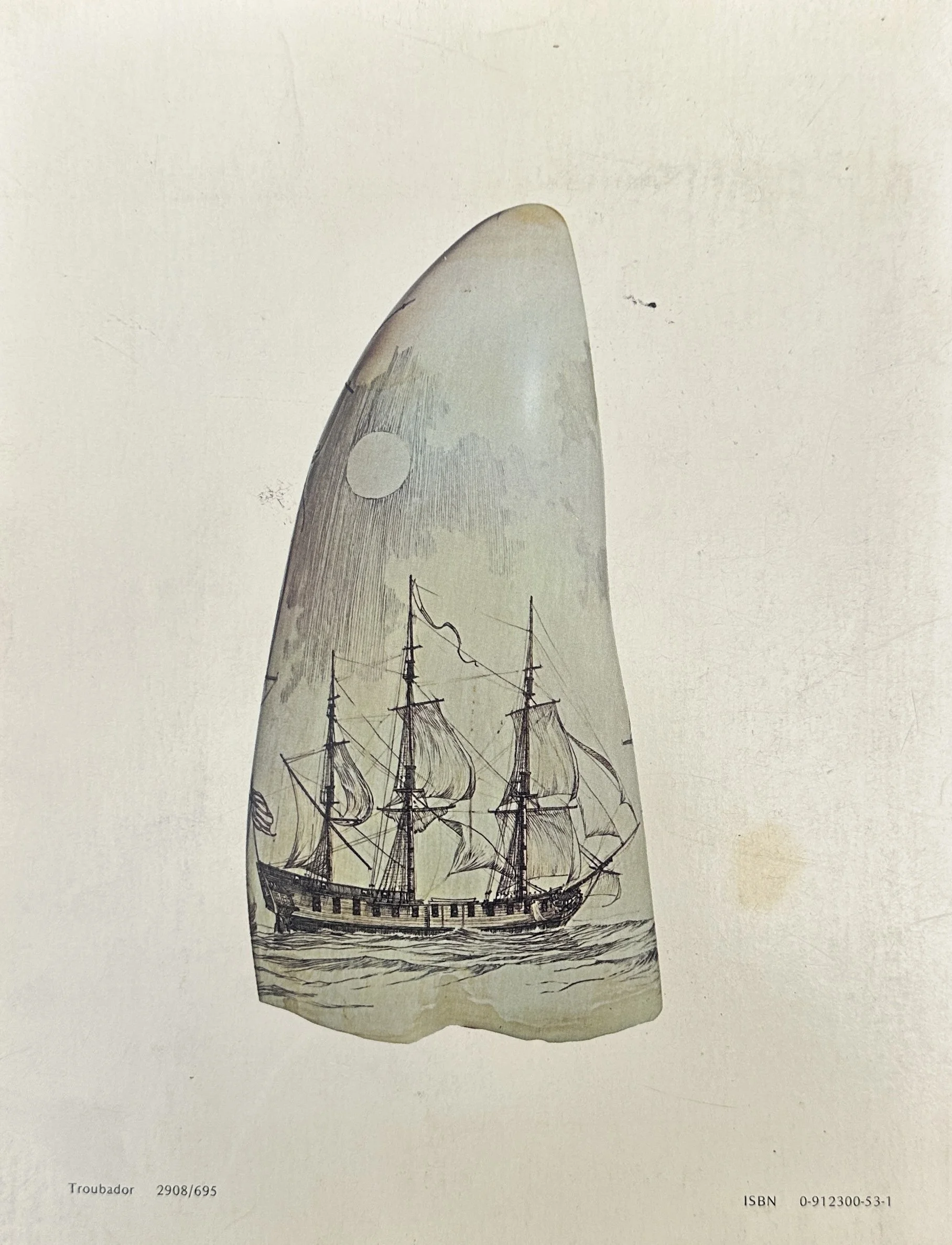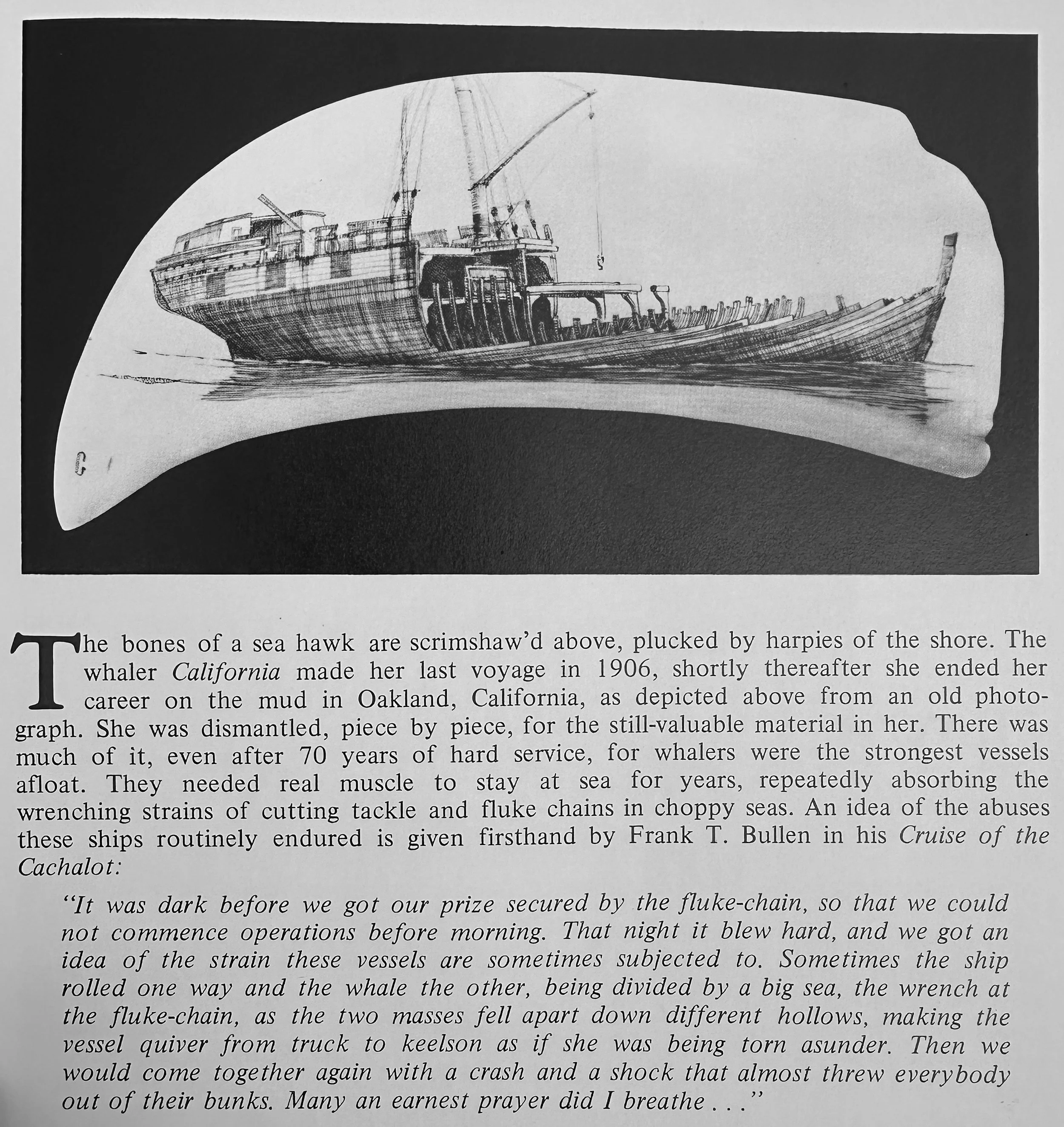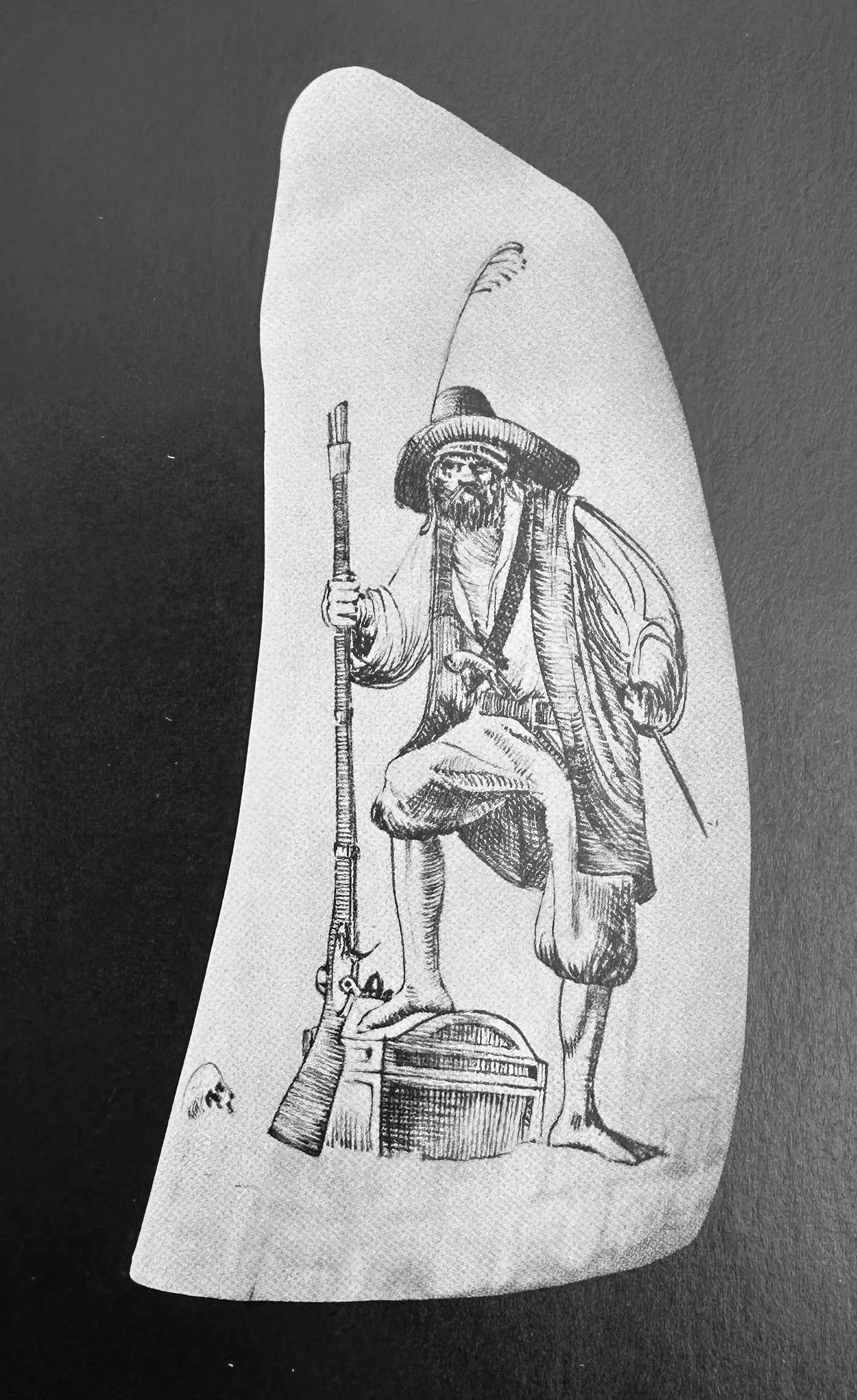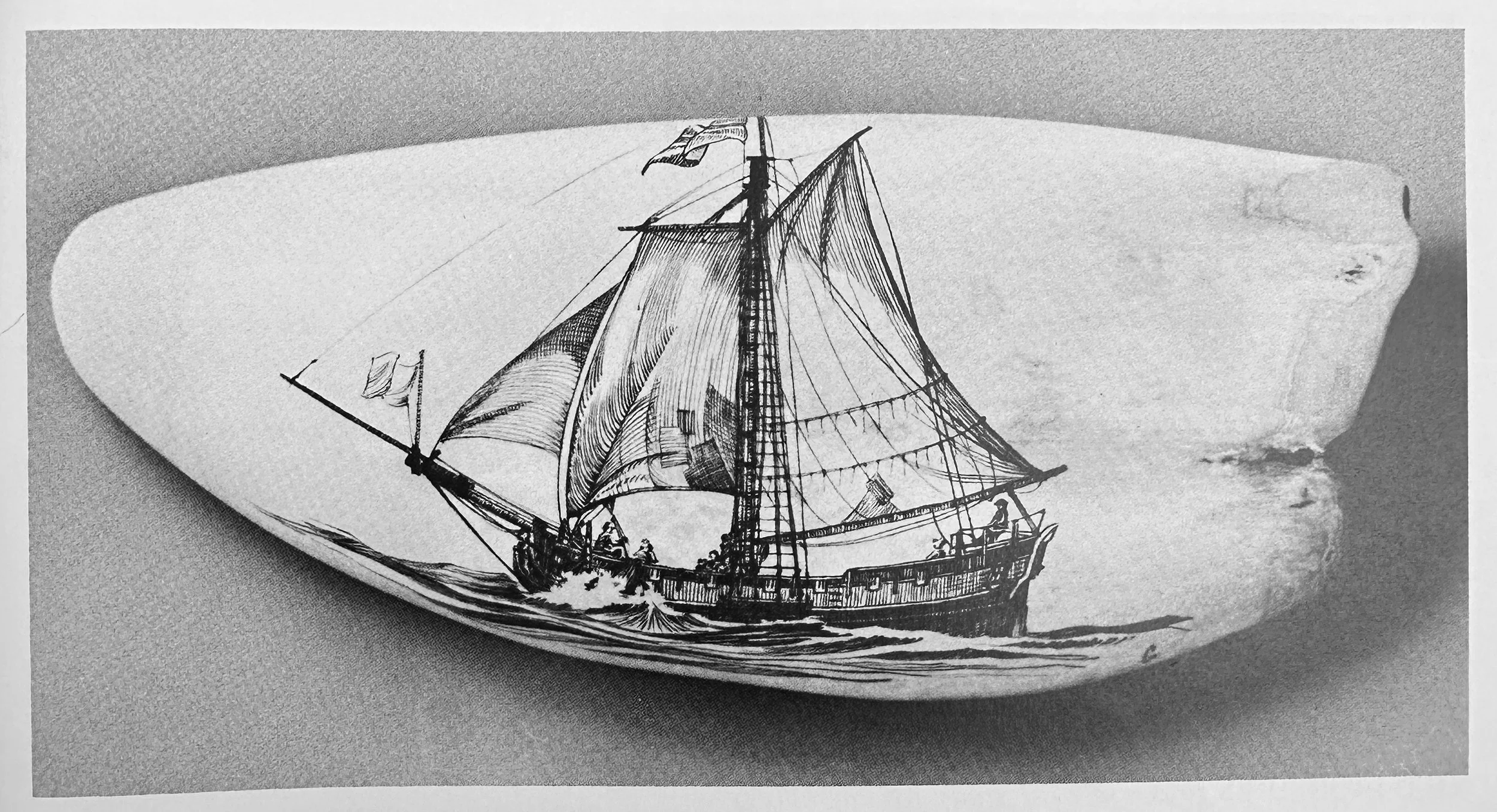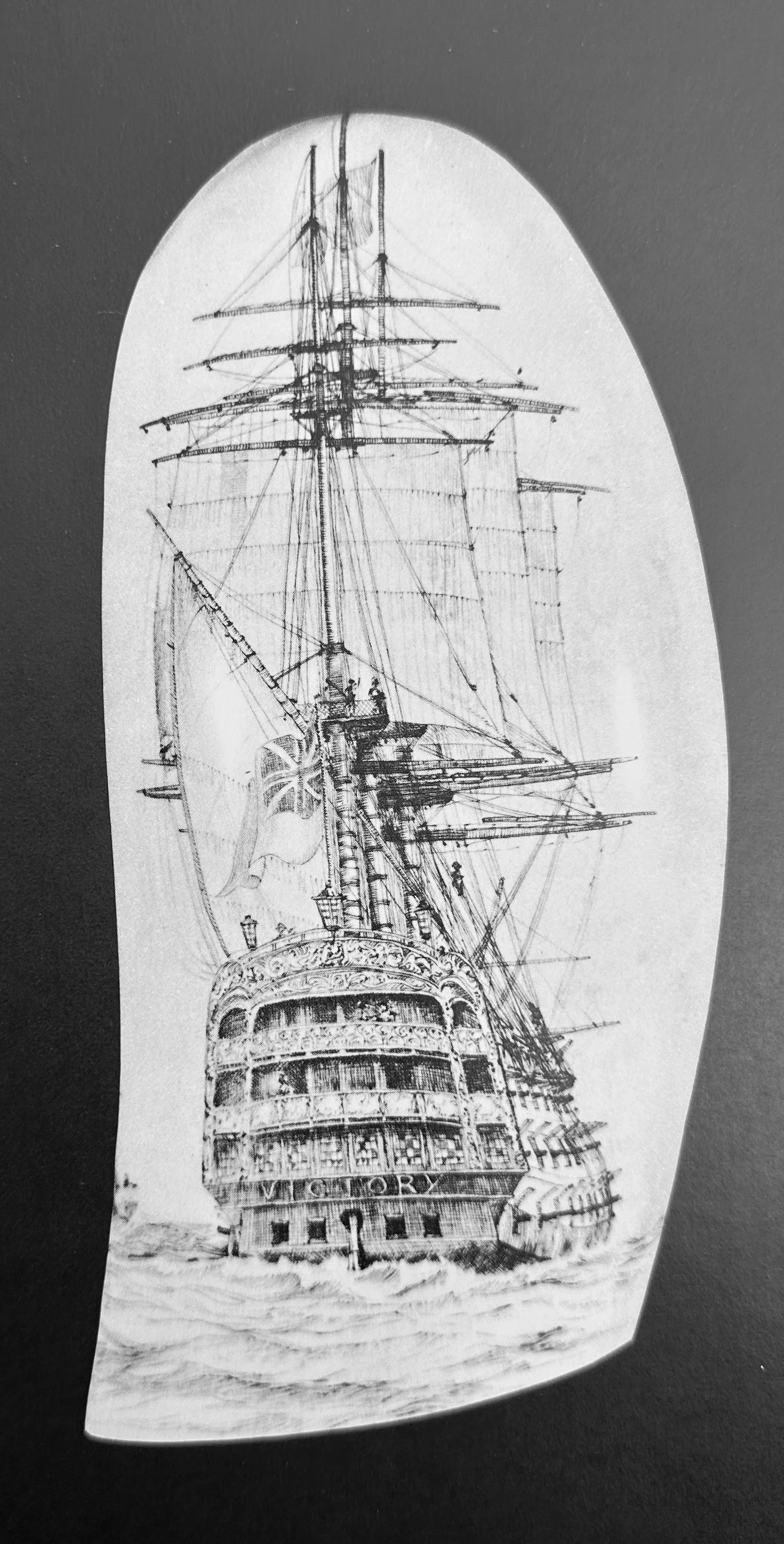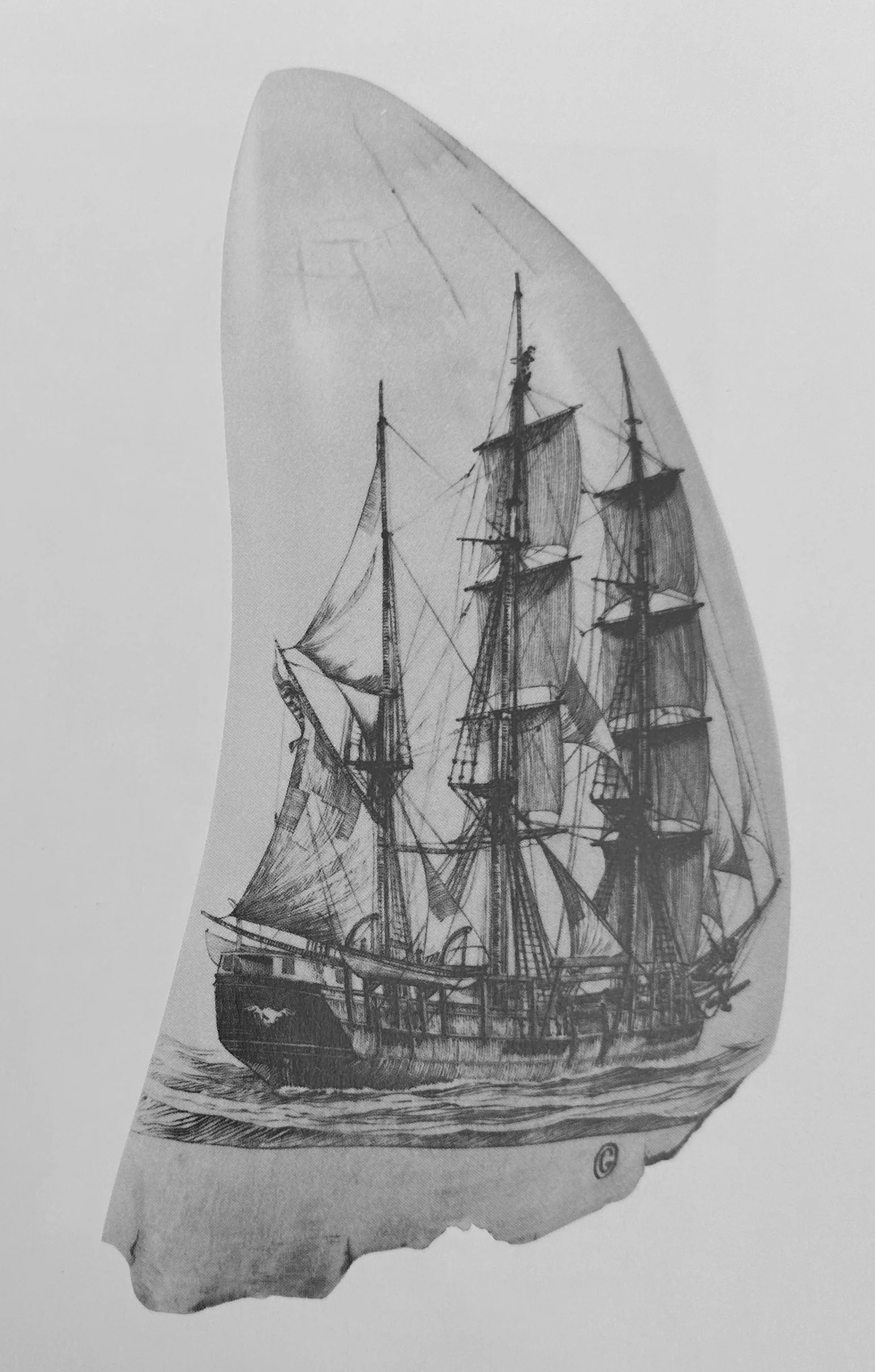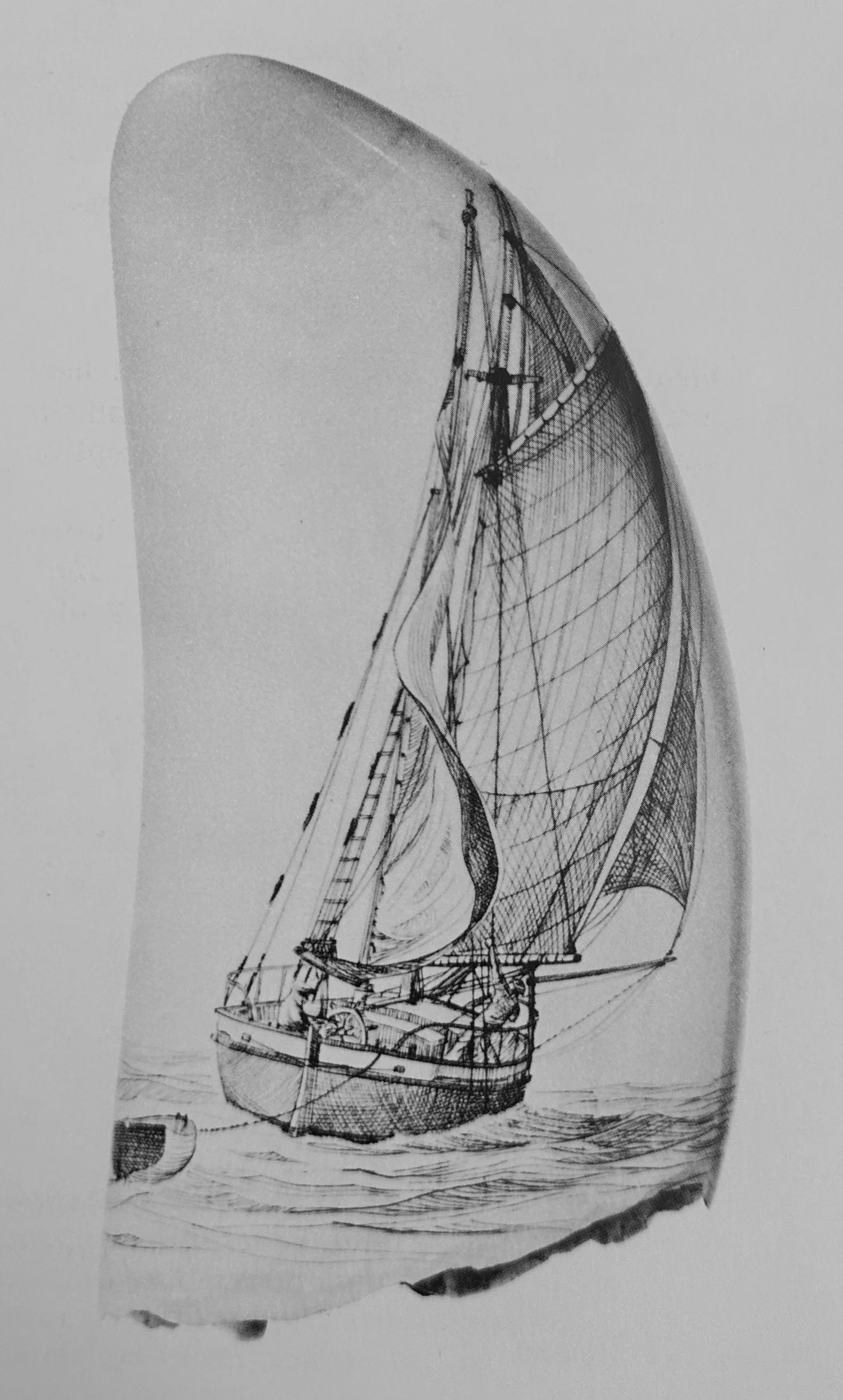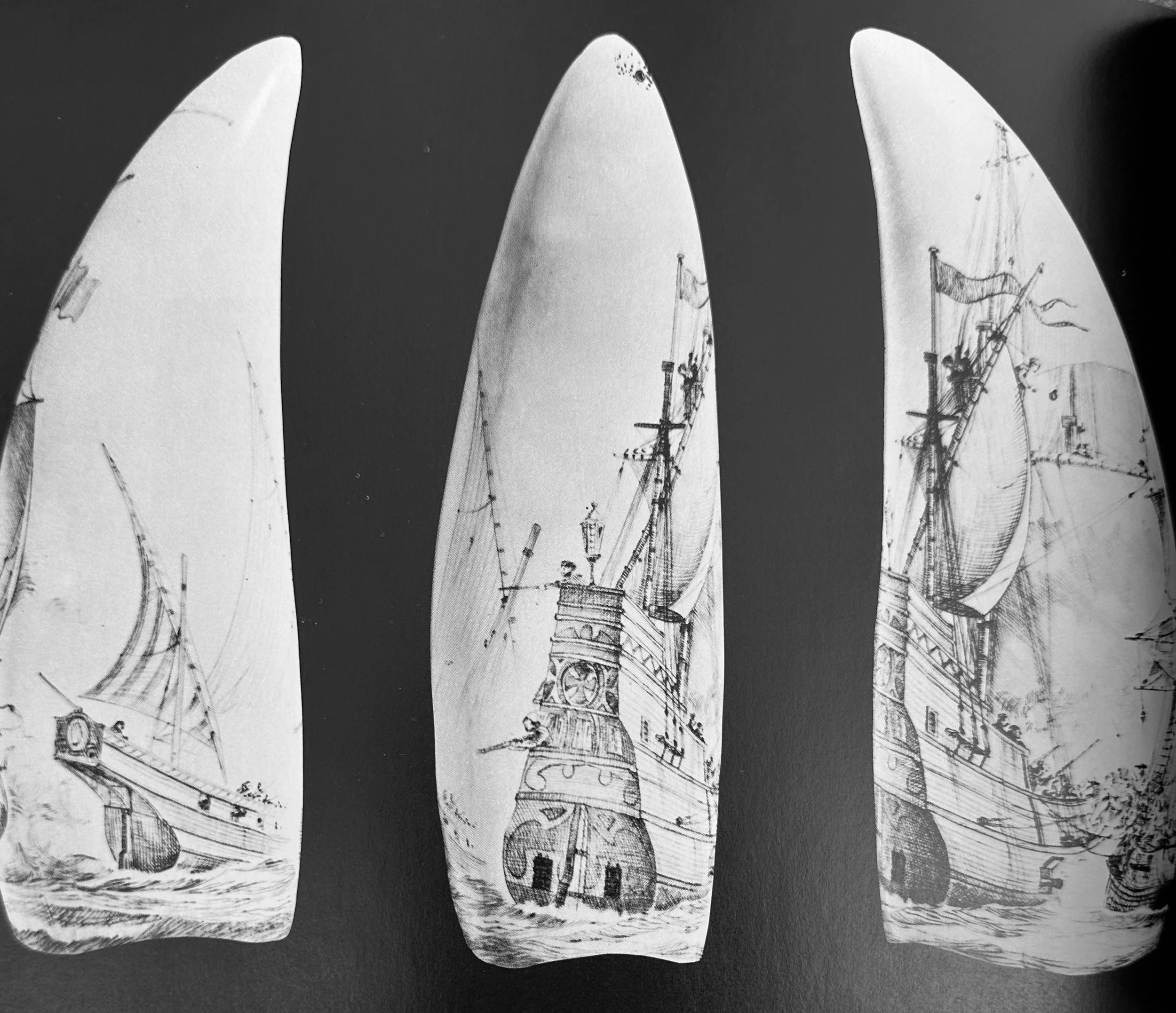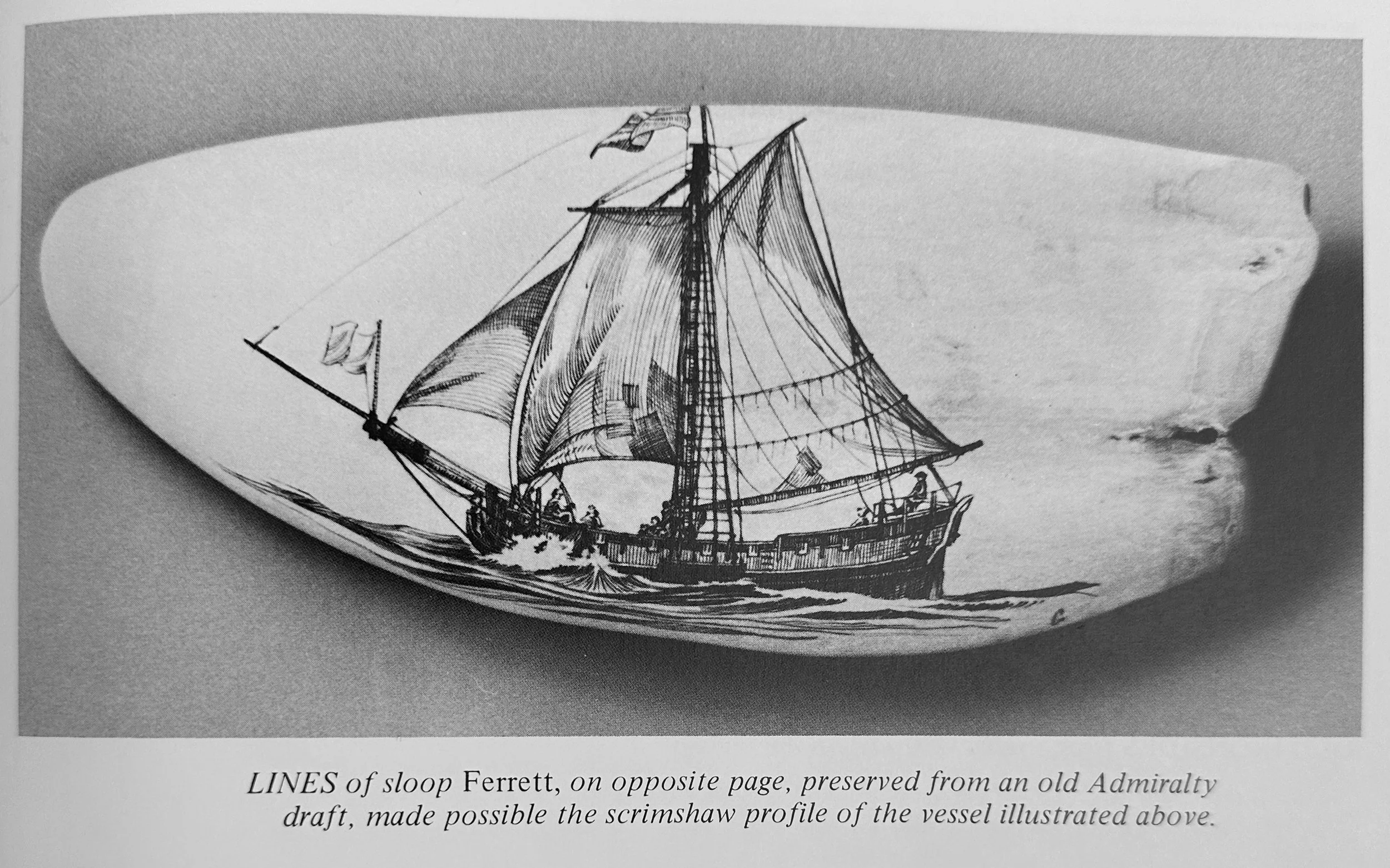Scrimshaw
William Gilkerson was among the few contemporary artists to revive the traditional maritime art of scrimshaw. Working primarily on antique or legal whale teeth, he used fine engraving tools and ink to etch detailed scenes drawn from the age of sail. His subjects often reflected the world of the whalers themselves — Arctic voyages, harpoons and longboats, whales breaching beneath storm skies, and the ships that carried men into those remote waters.
In keeping with the traditions of 19th-century whalemen, Gilkerson approached scrimshaw as both historical study and personal expression. His works combine accuracy of detail with a deep respect for the craftsmanship and storytelling of the original whaling crews, transforming a sailors’ pastime into finely rendered works of maritime art.

